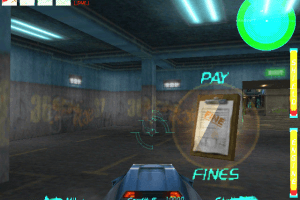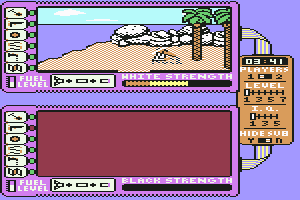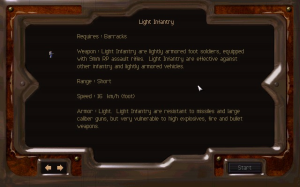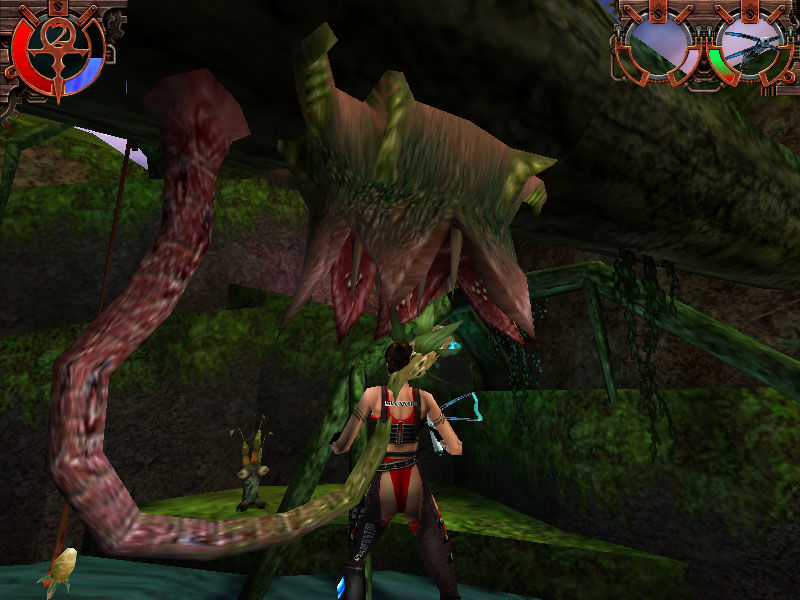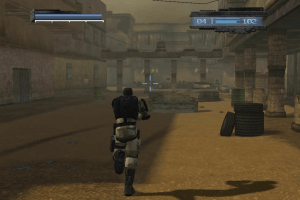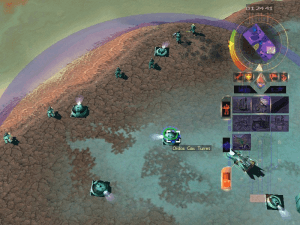Ubik
Windows - 1998
Description of Ubik
UBIK.... sounds like a mouth wash.
With all the new strategy games that have hit the shelves lately, and all the RTS clones out there, it is a bit of a mystery why so few companies have made any serious attempts at a tactical squad combat game. Cryo Interactive is a French computer company which showed extreme talent with the release of Atlantis. The French are known to make good games, and with the relase of UBIK, they appear determined to take on the action market as well. Let's see how well they succeed.
UBIK is based on the book by Philip K. Dick with the same title. Another one of Dick's books made it to the silver screen. The book was: Do Androids Dream of Electric Sheep, and the movie was... Blade Runner. This bodes well and shows promise for a game with lots of atmosphere and weird characters. As you will see, the story is one of UBIK's strongest assets.
I had the fortune of being able to play this game on two machines. Since I recently got rid of my antique P90 and replaced it with a faster computer, I was able to play the game on a low-end computer first, a P90 with 48 MB RAM, 2 MB of video memory and a 4x CD-ROM. The game actually ran quite well, and the only problem I noticed was some stuttering of the sound in the animated sequences. There is also an option in the game to load the entire level onto your hard drive before playing. This will take up a maximum of 150 MB and is really recommended, even on a high-end machine. It will decrease the loading time substantially when your characters enter a new room. If you have the space, use this option - it is well worth it.
During the installation of the game, it insists on placing itself in my root directory, with no possibility of change except to move it manually. I grit my teeth and pray that the rest of the game will be more configurable. No such luck, the game is as frozen as an Eskimo with pneumonia, with no possibility of reconfiguration. This is really unusal for a Windows 95 game, since such options are quite easily implemented. Fortunately, there are not too many keys to keep track of.
A game of lying and deceit... or is it?
UBIK is supposed to be a game of industrial espionage. The year is 2019, and mega-corporations wage war on each other, trying to steal the secrets of rival corporations. There are two main factions. The Hollis Corporation (bad guys), who infiltrate, sabotage, steal technology, and generally make a nuisance of themselves, and the Runciter Corporation (good guys), who clean up the mess that Hollis leaves, or preferably, prevent them from making one in the first place. Well, the espionage part pretty much fizzles out in obscurity. UBIK turns out to be pretty much a 'blast-everything-that-moves-before-it-blasts-you' typa game. To this end, however, it holds up rather well.
Both corporations utilize squads of marine-type characters to meet their goals. The squads consists of two main groups, soldiers and psionics. More on these later.
The Runciter Corporation was founded by Glen Runciter with his wife Ella, as a counter-measure for the Hollis Corporation who was spreading terror amongst the mega-corporations whose security proved ineffective against Hollis's powerful psionics. The Runciter organization pretty much acts as a protective agency for hire. Companies who suspect Hollis infiltration, hire Runciter to clean the house.
The Hollis Corporation works quite the other way round. They utilize the more familiar protective system that boils down to the companies either paying large sums of money or have their computer systems knocked out by hackers, or something equally devastating.
You play Joe Chip, weapons master and squad leader for the Runciter Corporation. Your job involves choosing and equipping your squad for each mission, going to the mission site to neutralize any Hollis activity (i.e. killing any Hollis agent you encounter) and complete any other mission objectives.
Thankfully, there is a bit more to the missions than going in guns blazing, blasting anything that moves. Most mission sites are filled with civilians and workers, who just detest being shot at, although they do not take cover when bullets begin to fly. These workers are, however, valuable sources of information about the site and should therefore be kept alive. Add to that the fact that the company will sue if you kill its employees. No rest for the wicked.
The phys, the psys and the Hollis.
For each mission you get a budget that you can use to buy agents and equipment. There are two main groups of agents, soldiers and psionics, phys and psys for short.
The phys are the muscle. They carry the heavy firepower, such as huge guns that make big holes, and armor that can resist shells from a 100 mm tank cannon. There are a number of specialists to choose from, including hackers, snipers, surgeons amongst others. They all have their strengths and weaknesses, and you have to balance the types you choose. Each specialist can use different equipment, and you need the right man for the right job. A sniper will not know how to operate a hackers kit, for instance.
The psys are the more nimble. They carry light weapons and armor. Their main weapon is the power of the mind. There are several types of psionics, with different capabilities. Psionic powers come in six categories. Each category has four powers, two defensive and two offensive. The pairs are of the same type, but one is more powerful than the other. The more powerful the psionic, the more categories she masters. A master psionic has the power to slay almost any Phy with one blow, at least so the manual says, but the only use I found for them was their ability to heal my agents. They are extremely vulnerable and require the cover of their more robust colleagues.
The Hollis Corporation concerns itself less with this problem, however. They use cybernetic implants to change their psys into phys, making a very effective hybrid. Runciter doesn't use implants to any large extent, because he still worries about human rights and other minor issues. The Hollis agents have none of their humanity left, being solely machine drones.
There is a multitude of equipment to choose from. This includes many different types of weapons and ammunition, first aid kits, adenaline shots, hacker equipment, force fields and other goodies. They all cost money, and you will not be able to afford them all, so you have to choose wisely. There is a very nice library interface to help you with these decisions. In it, you will find everything you need to know about different types of agents, weapons, enemies and equipment. The manual also covers these pretty extensively.
Once you have assembled your squad, you are ready to take on a mission. A nice animated sequence shows your agents traveling to the mission site in some vehicle or other. These are very well done and add tremendously to the atmosphere of the game. All characters in the sequences are 3D-rendered and look very good. This is by far preferable to having bad actors doing the job, something which has ruined too many games. The voice-overs are excellent, and the sequences blend in with the flow of the game really well.
Tactics, or just another shooter?
Once you reach the mission site, the tactical portion of the game takes over. You follow your squad around with cameras that are positioned throughout the levels. There are a lot of them, and you can either switch between them manually or have a smart camera switch for you, following your agents around as they move. You will find yourself doing a combination of both. You also have the possibility of switching cameras by pressing the right mouse button over a desired area on the map. The cameras work very well once you get the hang of it. It can sometimes, however, be a problem that you do not always have a firm grasp of where exactly your agents are positioned relative to their surroundings when you switch a camera.
The manual claims that your agents will act intelligently to their surroundings, using obstacles as cover, etc. This is partially true. When they are moving, they hug the walls and stay away from doorways. The main problem, however, is that those dimwits refuse to stay in formation. As your phys are stronger than your psys, they should be in the front ranks. Each agent, however, will always take the shortest route to their destination. This quickly breaks up any formation you might have had and can be devastating if you get ambushed. Once they get into a fire fight, common sense goes for a coffee break. Your agents will not duck unless instructed, they will not scatter unless instructed, they will not take cover unless instructed. This is a major nuisance and detracts from the realism. They do, however, return fire, and most of the time they do so in an intelligent manner, advancing on the enemy, pinning them down. A small problem is that large-bore explosive gunners sometimes fire rockets at point-blank range. Their heavy armour usually takes the blow, but any soft target close by will not be so lucky. As your psys tend to scurry towards the front ranks, they will constantly be gunned down. The tactical part of the game basically boils down to choosing the right squad, and keeping your phys on the front line.
Aside from these problems, however, the game-play is very solid, and most of the time you will have no complaints.
Another interesting addition to the levels is the ability to hack into the computer mainframe using your hackers. This is generally useful for shutting down security systems, opening locked doors, and the like. You get a code that you are supposed to break. It consists of four digits, two of which will be given to you. Depending on the skill of the hacker and the equipment used, you get a certain number of tries before the defensive programming kicks in and, at best, disconnects you or, at worst, kills you. There is, however, no logical way to solve these codes, so it all comes down to guesswork. If you get ten or more tries, you are sure to crack the code, since there are only ten numbers. Otherwise, you run the risk of being booted or killed.
When you get back from your mission, your troops are advanced through the ranks, their skills increased, etc. If you wish to hire them again for the next mission, they will be a bit cheaper than the other soldiers of the same class, so keeping your agents alive is a priority. They will also keep the equipment that they may have found or bought, so you do not need to re-equip them between every mission, even though you do have to pay for the stuff they carry. The sad part is that you cannot place the advances they receive yourself, making the whole procedure a bit dull. You only see which people learned what and then you move on. Well, despite what the manual might say, this is not an adventure game in any sense, so it really doesn't matter that much. It is just not a part of the game.
Controlling your squad
Next up for battering is the interface. You can select your agents individually with the numeric pad, from 1-5, or you can select the entire squad with a 6. Your agents are also listed on the right-hand side of the screen; you can select them, check their inventory, access psy powers, etc. Once they are selected, a left click on the mouse will make the agents move somewhere, pick up an object, open a door or attack a target. The right mouse button will show a list of possible actions, such as kneeling or exploring. This works out very well. There is also a function that allows you to select all your psys or phys out of the currently selected group of squad members. This is also very handy. A good interface, then, you would say. Well, yes, but there is one major omission: You cannot assign hot-keys to grouped members of your squad. This would have gone a long way in preventing the death of your psys, as it is quite difficult select them using the mouse in the menu-like interface and at the same time target Hollis agents. I would also have liked to be able to reassign the keys. This feature and the hot-keys would have made the interface a work of genius. As it is, the whole interface feels somewhat incomplete.
Level design and rehash
The level design is pretty basic. The levels are two-dimensional, although some buildings do have stairs. Walls and furniture are also present and work very well. What sets the levels apart is the backdrop, which looks fabulous. A lot of work has gone into creating the artwork, and the levels are very believable, varied, and, for that matter, original. Examples of levels are a space yacht, a lunar base, and a blimp. (That's right, those big cigar-shaped thingies filled with hydrogen, not helium)
There are fifteen levels in all, and aside from the last few levels, all are varied and interesting. The last levels were a bit of a letdown, even though they were visually the best in the entire game. They basically had you doing the same thing over and over and over again. After clearing the streets of Hollis agents for the fifty-eleventh time, I was about to chuck the game out the window. It would have been better to have fewer levels than to use the same one over and over again. I fail to see the fun of it, and there are better ways to add to longevity.
The sound is very good. The sound effects are well done, the speech is clear, and the weapons sound realistic. There is not a lot of music, but the little there is creates an atmosphere. The only problem with the sound that I encountered is that when your agents see an enemy, they will scream out a warning. They sometimes go on hollering the same warning over and over again, until you perform an action with them or remove the threat.
The final gripe.
So far, it seems like I've been doing a lot of griping. Sadly, I'm not done yet. Cryo Interactive has, for some cryptic reason of their own, omitted the save-game feature. Instead, the game saves at key moments, leaving a separate save game each time. It does this quite often, which means that your save-game directory will be cluttered with games you don't want. It also means that you may have to replay parts of the game, because it was not saved where you wanted it to be. This very rarely happens though, since the game is saved quite often. It provides a picture of the screen when it is saved and a mission timer, so you can always see which one is the most recent.
There is no multiplayer support for the game. I don't hold this against it though. The game is an excellent single-player game, with an engrossing storyline, so even though multiplayer support wouldn't have hurt, its omission doesn't hurt the game.
The story is original and fun. Too many games fall short on a bad background story, and even though gameplay is the key factor, a good story adds tremendously to the experience, and UBIK doesn't disappoint. It's a strange tale, to say the least, and it makes some dramatic shifts throughout the game, which keeps you on your toes. True, it is linear, and it is not the Pandora Directive, but I really liked it. Now that I have played the game to conclusion, I may even read the book.
So what is UBIK?
All in all, UBIK is a really good game, although a bit short. It misses out on any award, basically because the few problems that the game does have, though apparently trivial, are so major and sometimes detrimental to the gameplay. They could have been easily fixed. Add the hot-keys to the interface and a save-game feature, and UBIK could have received a Silver Award. If you like squad-based action games (not that there are many out there), then you will definitely like UBIK. After playing it through, a lot of life's questions might be answered, including the most important one: What the hell is a UBIK?
... or you could just read the book.
Review By GamesDomain
External links
Captures and Snapshots
Comments and reviews
Iamfivebears 2025-08-22 0 point
Same issues, "English" download has a German installer that doesn't work. I tried the German download (as it's the biggest filesize, I hoped it would have multiple languages) but it crashes on launch.
KASUMI65 2024-12-30 1 point
French version provided :
https://archive.org/details/Ubik_France
German :
https://archive.org/details/Ubik_Germany
Spanish :
https://archive.org/details/Ubik_Spain
Italian :
https://archive.org/details/Ubik_Italy
Jones 2023-01-27 2 points
Same problem. Install's in German and I can only get an error message no matter what I do.
Write a comment
Share your gamer memories, help others to run the game or comment anything you'd like. If you have trouble to run Ubik (Windows), read the abandonware guide first!
Download Ubik
We may have multiple downloads for few games when different versions are available. Also, we try to upload manuals and extra documentation when possible. If you have additional files to contribute or have the game in another language, please contact us!
Windows Version
Similar games
Fellow retro gamers also downloaded these games:
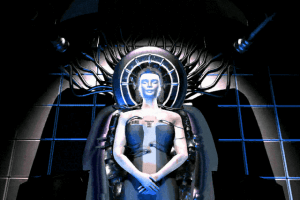
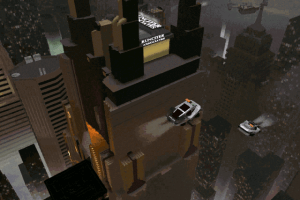
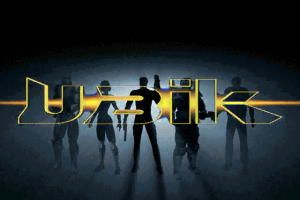
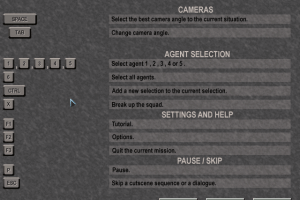
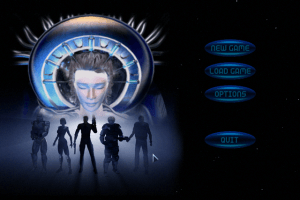
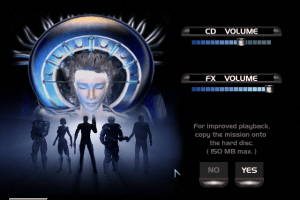
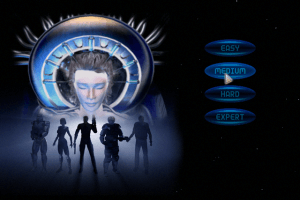
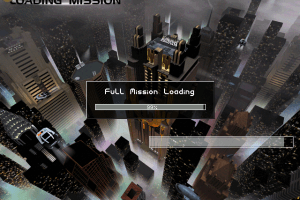
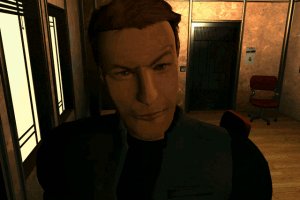
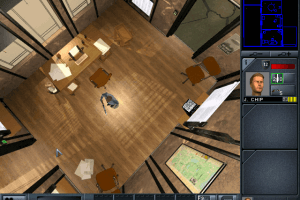
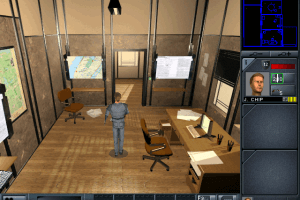
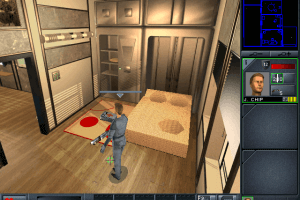
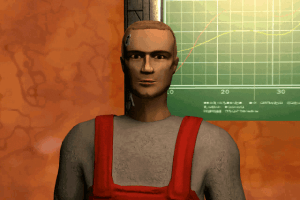
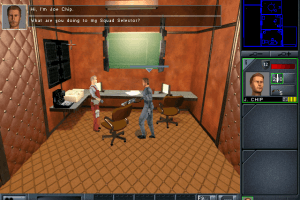
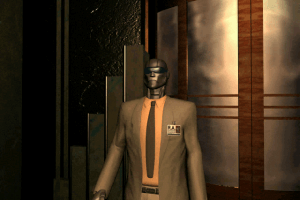
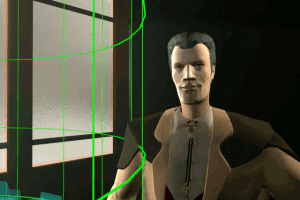
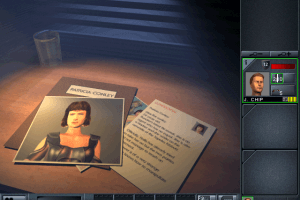
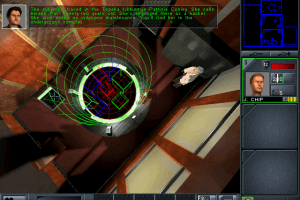
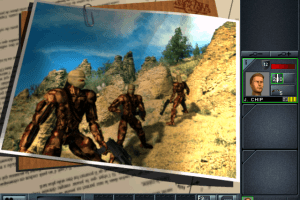
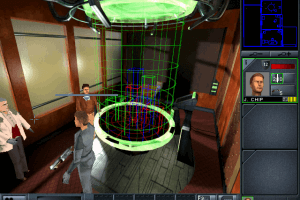
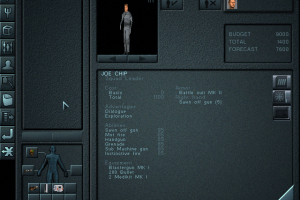
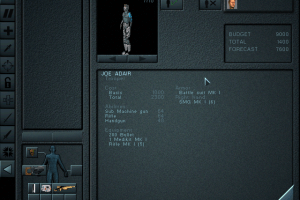
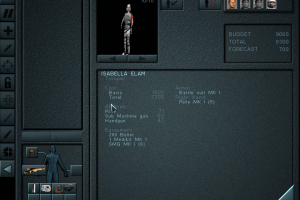
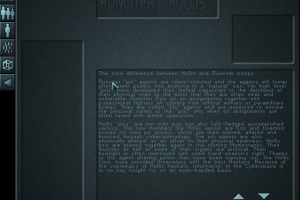
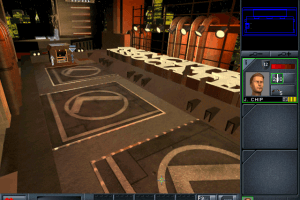
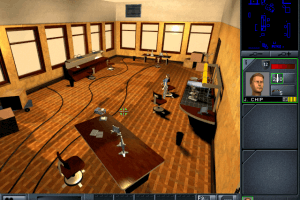
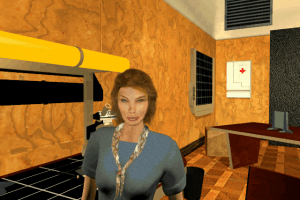
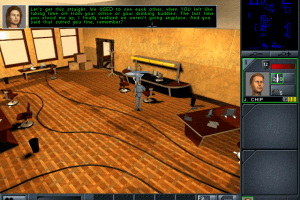
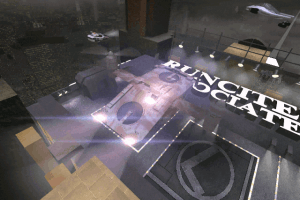
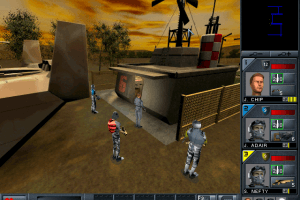
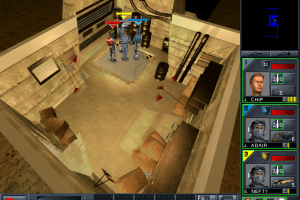
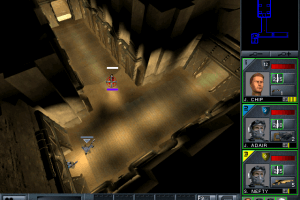
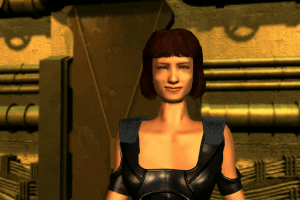
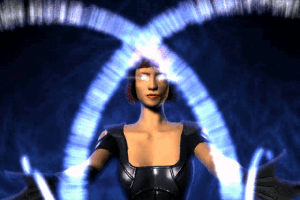
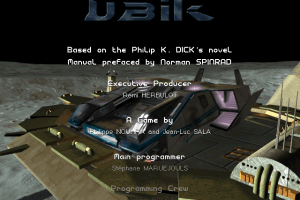
 238 MB
238 MB 484 MB
484 MB 236 MB
236 MB 237 MB
237 MB 235 MB
235 MB